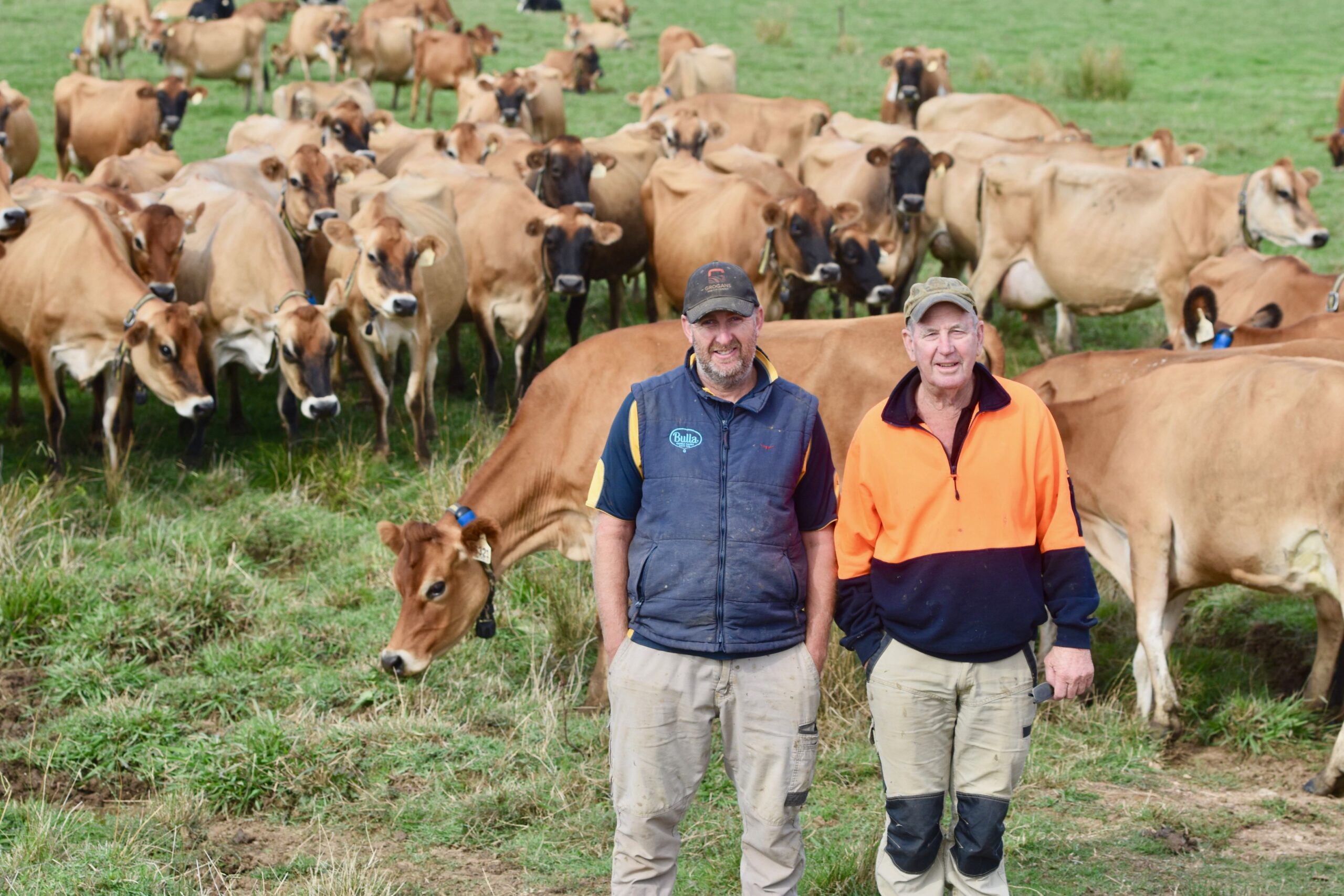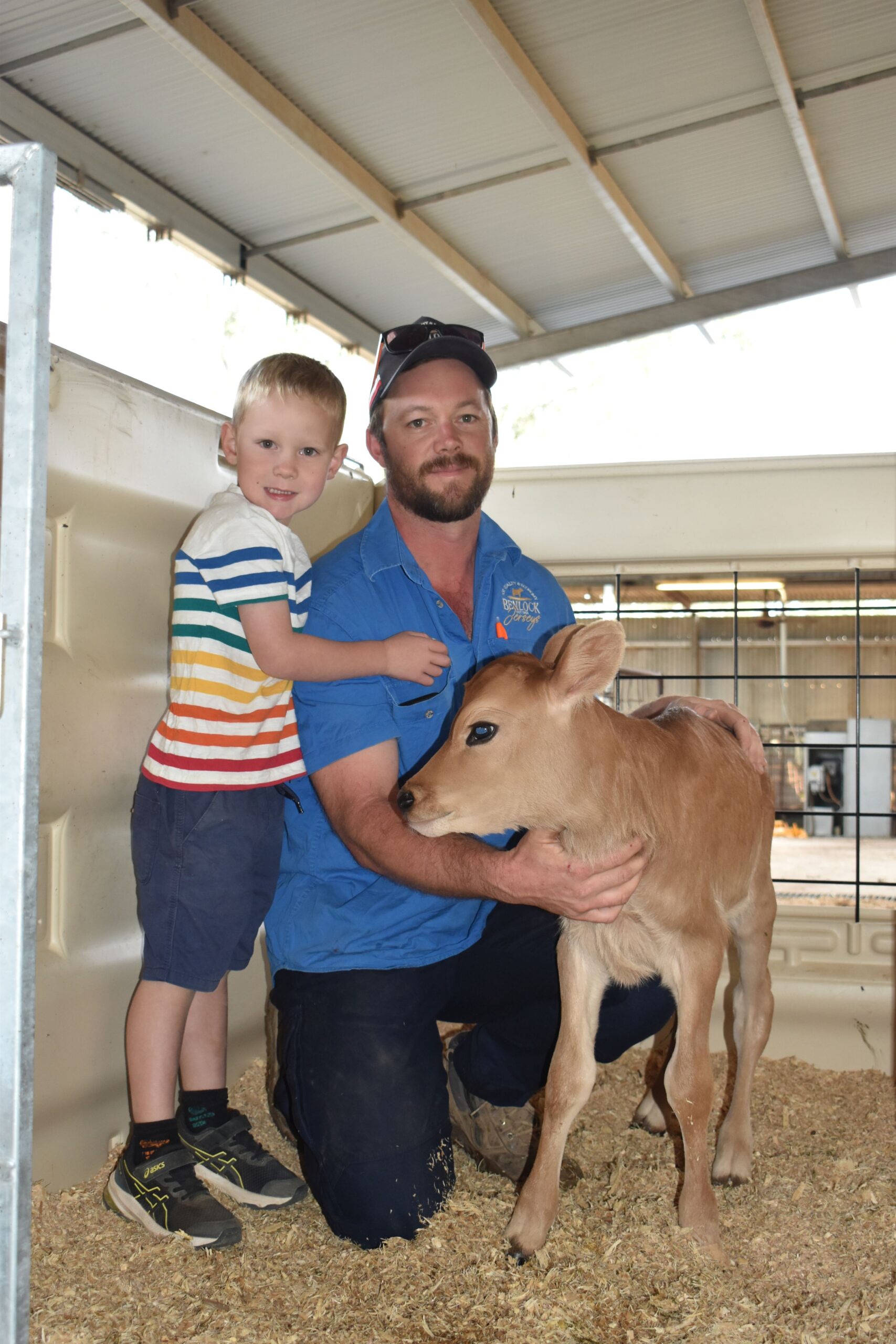Big genetic gains for Australian dairy farmers
Some Australian dairy farmers have made genetic gains of more than 200 per cent in recent years thanks to industry tools such as the genomic testing, the Balanced Performance Index, Good Bulls and sexed semen.
These huge genetic improvements, measured by increases in each herd’s average Balanced Performance Index (BPI) since 2020, were uncovered as part of DataGene’s review of herd performance.
DataGene Stakeholder Relations Specialist Peter Thurn said this analysis demonstrated that tweaks to breeding – using modern herd improvement tools – can deliver tangible benefits to a dairy farm business faster than ever before.

Bill and Andrew Cochrane, Craigielea Jerseys, Bamawm, Victoria have bred the equal top Jersey cow, Craigielea Vicky 6151 VG 87 in DataGene’s April release of the Australian Breeding Values (ABVs).
“Herd average BPI is generally something that moves very slowly, but in the case of some herds, their progress has been quite rapid,” he said.
“This fast improvement is due to the use of industry tools, especially genomics, and then using this genomic DNA information to choose the highest BPI animals to breed their herds’ next generation.”
Genomic testing analyses an animal’s DNA from a sample such as ear tissue or a tail hair, to predict future performance. Heifers can be tested as young calves, so farmers can make early decisions about their future in their herd.
“The result of this can be improvements in fertility, production, survival, mastitis resistance and in some cases, this means less replacements are required from year-to-year and it could open new income streams such as dairy-beef.”
Bamawm, Victoria Jersey breeder Bill Cochrane attributes the 168 BPI gain or 310 per cent rise in his herd’s average BPI to “losing the bottom of the herd” and genomic testing.
“We trusted genomics when it first came in and we were quite happy to use a bull just on his genomic figures,” he said.
“Genomics also played a role in eliminating the bottom end of our herd. For the past three or four years we’ve used beef on the bottom – according to genomics – and sexed semen to breed our heifers. Years ago, we’d just chuck a bull in with our heifers, but they are our better animals and using sexed semen ensures we breed our replacements from them.”
Bill and Kaye Cochrane operate Craigielea Jerseys with their son Andrew and will milk 550 cows this year.
In DataGene’s April release of Australian Breeding Values (ABVs), the Cochranes have the equal top Jersey cow, Craigielea Vicky 6151 VG 87 at 502 BPI.
Bill said DataGene’s BPI system was a good guide for breeding because it enabled dairy farmers to chase production as well as type traits that improved the functionality of cows.
The BPI accounts for traits that affect a cow’s lifetime contribution to the farm business: production, health/fertility, longevity, workability, feed efficiency and type.
NSW Riverina dairy farmers Bernard and Jenny James attribute their improvement of 359 per cent or 211 BPI units to a “tough” approach to managing fertility as well as sexed semen and using a group of three to four Good Bulls to improve herd traits.
Bulls that carry DataGene’s Good Bulls logo meet the minimum criteria for Balanced Performance Index and reliability and are available for purchase.
Bernard said genetic gains were valuable to his business and he was looking forward to future improvements.
“I’m excited to think about what’s going to happen in the coming years after this big jump in the last few years; it is really only just starting,” he said.
“We have a beautiful line of cows that are well-natured, and we don’t have the cull heifers that we used to. Milk production is slowly climbing, and we expect that to keep climbing.”

Andrew Rushton, pictured with son Brodie 4, Benlock Jerseys Rochester, Victoria has used genomics, sexed semen, and the Balanced Performance Index (BPI) to increase the genetic merit of his family’s dairy herd.
Using genomic data to make decisions about which heifers to retain – when they are young calves – and those to breed with sexed semen has helped Andrew Rushton and his family improve their BPI by 310 per cent to 172 BPI.
Andrew, his wife Jess, dad Bryan and mum Lee operate Benlock Jerseys at Rochester, milking 280 cows.
“The BPI takes into account so many other things that aren’t visual such as survival, daughter fertility and all the things you can’t see,” he said.
“We’ve improved our BPI by using genomics to understand our best BPI heifers before we start milking them and then we used that data to breed our best heifers with sexed semen to improve our genetic gain.”
Visit www.datavat.com.au to look up the DataGene’s latest release of Australian Breeding Breeding Values and indices such as the BPI.
For more information contact: DataGene 1800 841 848 or abv@datagene.com.au or www.datagene.com.au.
DataGene is an initiative of Dairy Australia and the herd improvement industry.


